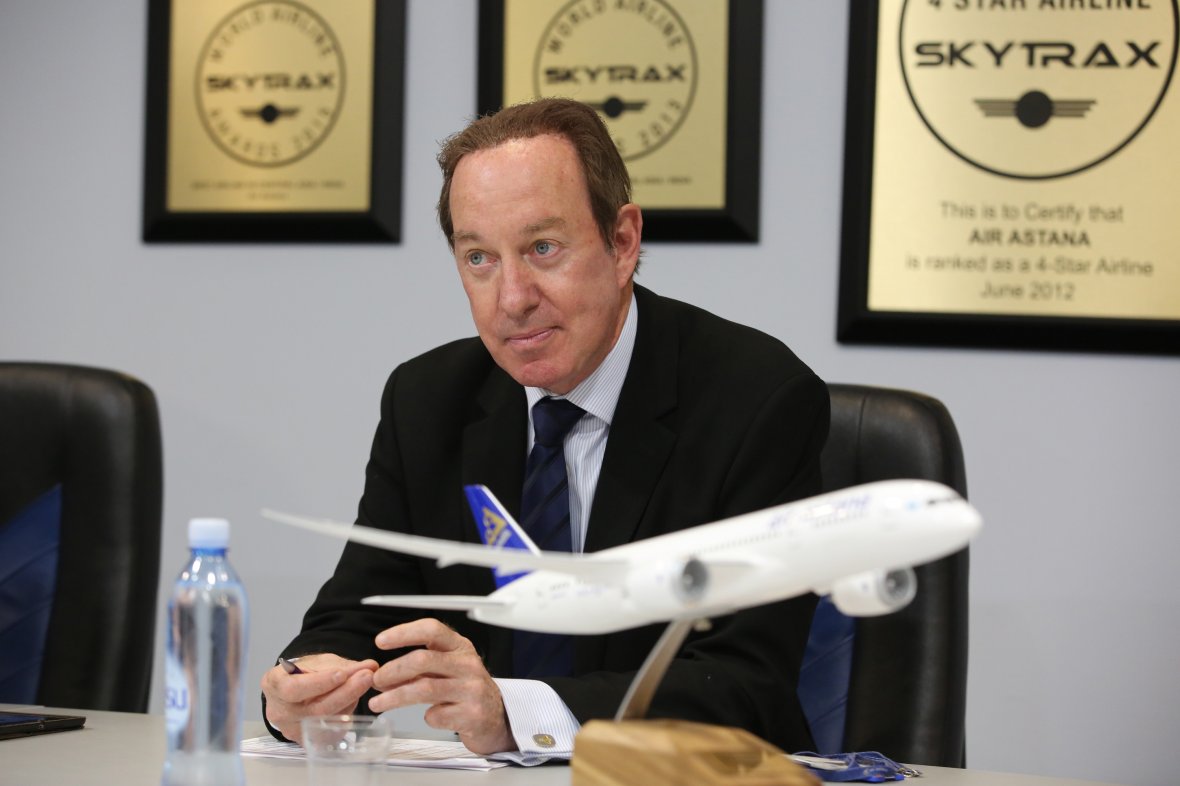With an area of 2,724,900 square kilometres, Kazakhstan is the ninth-largest country in the world and also the largest landlocked country.
Located in Central Asia and the former Soviet Republic, Kazakhstan stretches from the Caspian Sea in the west to the Altai Mountains on its eastern border with China and Russia. The country's largest metropolis, Almaty, is an important trading hub. As its border to Russia is 7,644 kilometres long and the nation has close to 20 million inhabitants, aviation became very important.
After more than three years since my last visit to Air Astana regarding the delivery of the carrier's first Airbus A321neoLR, it was good to meet with Peter Foster, the President and CEO of Air Astana for a personal chat.
More Range for A321LRs
“By adding a third ACT to the A321LR, we hope to achieve a full payload range increase of 300 to 350 additional nautical miles, which ... would be helpful,”
Air Astana President and CEO Peter Foster
This extra range could give Air Astana the possibility to operate routings from Almaty to Tokyo and to Paris. “We operate the LR close to maximum range on several routes,” Foster added. He said there are other carriers that deploy the additional ACT for this reason and Air Astana expects to make a final decision shortly.
When asked about the A321XLR, Foster said, “It might be a good fit for us, subject to final certification and payload range confirmation.”
Meanwhile, the airline said it plans to phase out its five Embraer E190-E2s in 2024-25 since Air Astana’s LCC subsidiary FlyArystan has no further need for the regional jets.
Premium Economy Class on 787
Air Astana is also preparing for the introduction of Boeing 787 operations in 2025. The carrier will up-gauge to the larger 787-9, instead of the originally planned 787-8.
Air Astana’s 787 will be offering a total capacity of 263 seats, of which 30 seats will be Business Class. Around 40 seats will be in Premium Economy class, which will be a new product for Air Astana. “We have three 787s on order initially, though we expect the fleet to expand,” Foster said.
Flying to the U.S.
The 787s will initially be deployed on existing 767 routes. By the end of 2025, Air Astana hopes to operate to New York, although nonstop flights could be stymied if Russian airspace remains closed to the carrier, which ceased all operations to, from, and over Russia in March 2022.
In that case, the airline may choose to make a midpoint stop at Aktau—on Kazakhstan’s eastern Caspian coast—in order to serve oil-related traffic to and from that region, as it does presently for its flights to and from London. Additionally, Kazakhstan’s airports will require U.S. Category A certification.
P&W1100 Chronic Illness
Regarding global supply chain issues, Foster said the carrier continues to experience long delays for deliveries of both aircraft and engines, in particular, its fleet of A320/321neos and accompanying Pratt & Whitney PW1100 engines.
“The P&W1100 issue has become a sort of chronic illness with which we have had to learn to live. We presently have two long-term [aircraft on ground], which is an improvement. However, reliability issues persist.”
Air Astana President and CEO Peter Foster


